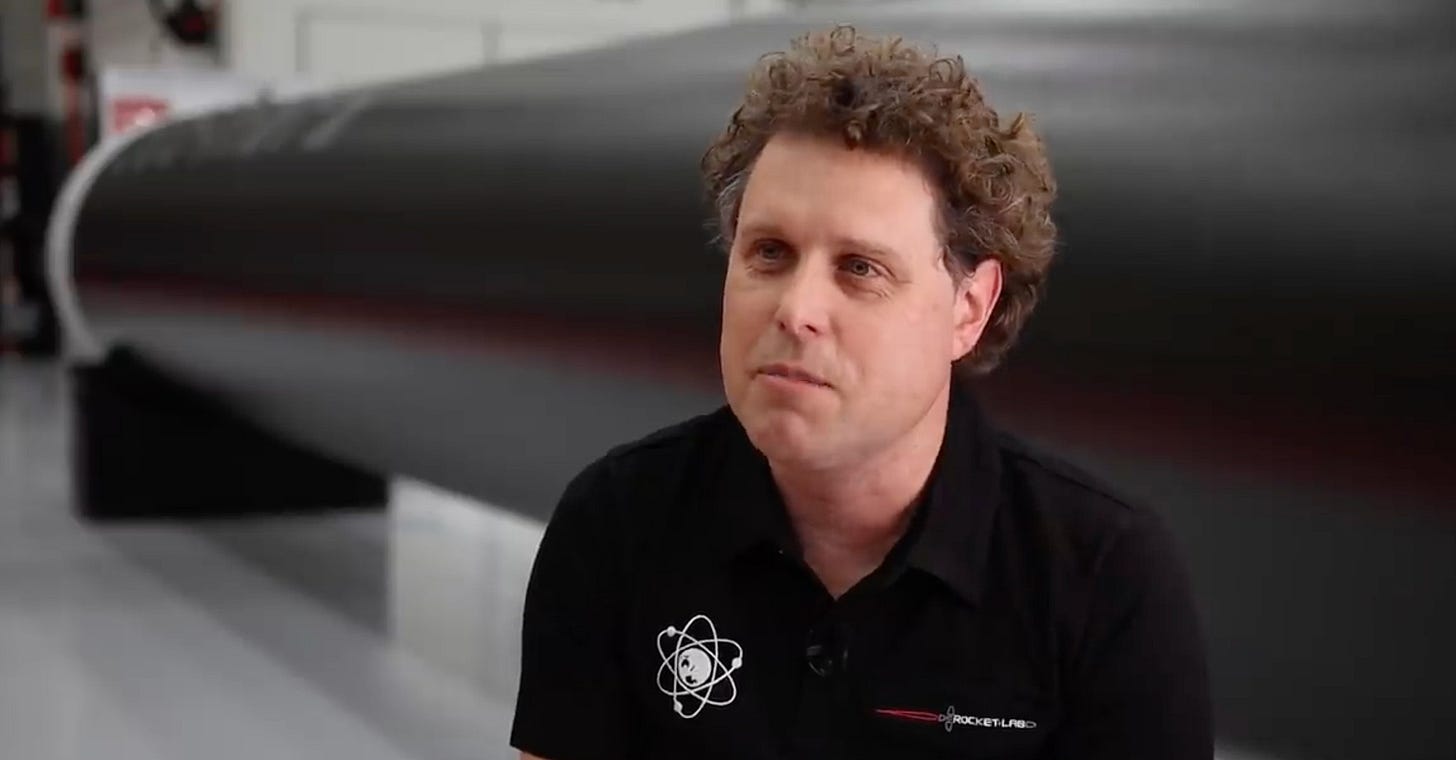
Thanks for finding Full Throttle. Please share and subscribe here. Full Throttle posts twice a week. Follow me on Twitter, Instagram, and Linkedin.
It really doesn’t get old watching Elon Musk’s company SpaceX return a rocket booster from space and land it on a bullseye target. I was at Cape Canaveral when the company landed two boosters at the same time after the first Falcon Heavy launch. What a sight! Musk has made it clear that a reusable rocket is key to growing the space economy. As he likes to say, “would you throw away a jetliner after one flight?”
SpaceX recovery of two boosters during the February 2018 test of its Falcon-Heavy. (Credit: SpaceX)
There is more than one way to return a rocket to the factory for re-use. Rocket Lab first started using a parachute to save its first-stages. But all that saltwater after splashdown off New Zealand makes it a bit harder to refurbish a rocket.
GRAB A FALLING ROCKET
CEO Peter Beck and his team came up with an idea. What if they used a helicopter to snag the parachute and the booster to fly them back to a ship and avoid the salt water? Sounds crazy. Well, they just did it.
Animation and test of Rocket Lab's helicopter recovery system. (Credit: Rocket Lab)
Rocket Lab didn’t get the booster back to the ship, but the helicopter was able to snag it. Beck told reporters that it was a, “pretty epic day for us today.” It was just Monday that the company made its first real attempt to capture a returning booster.
UNUSUAL FEEL
The helicopter crew grabbed the chute and the vehicle, but the pilots thought the loading felt unusual, it didn’t match their simulations. The pilots decided to let go of their dangling cargo. They released the rocket, which then splashed down and was recovered.

Rocket Lab CEO Peter Beck. (Credit: Rocket Lab)
Not fully successful, but the CEO says not getting the rocket to a boat is a trivial matter. “Actually catching it, that's the hard thing, Beck explained. “Ninety-nine percent of the work is done. We'll figure out what pilots didn't like and we’re gonna fix it,” he said.
The system is designed so that as the rocket is falling to earth under a parachute, a capture line is “flying” perpendicular to the chute’s lines. The helicopter, dangling a capture hook, gets close and then snags the capture line.
LISTEN TO THE GASP
Rocket Lab’s webcast showed all that happening. A cheer erupted from employees as the chopper grabbed the chute. “Absolutely incredible stuff here,” the commentator exclaimed. As she continued to describe the accomplishment, a little less than 40 seconds later, the gathered crowd lets out an audible gasp (1:42 into highlight reel), apparently when the pilots released the captured booster.
Highlights of the Rocket Lab launch and recovery attempt of its booster with a helicopter. (Credit: Rocket Lab)
The commentator continued with the accolades and explanation for a bit and then the webcast went silent. It was 40 minutes later that the commentator returned to reveal the pilots had decided to jettison the rocket.
CEO Beck said, “that's not entirely surprising that the real thing was slightly different to the simulators.” He added, “at the end of the day, that was all part of our standard operating procedures- if the pilots weren't happy at any point that's what they were instructed to do.”

(Credit: Rocket Lab)
REUSABILITY
There was plenty to celebrate. A complicated and potentially dangerous system worked. That gets Rocket lab a step closer to easier reusability. As Beck pointed out, “80% of the costs, or thereabouts of the rocket, it's actually in the first stage.” “Today has given us just extreme confidence to get on with it,” he added.
While the world was watching the helicopter snag that rocket, its upper stage did its job and put 34 satellites into orbit.
(Cover image credit: Rocket Lab)




